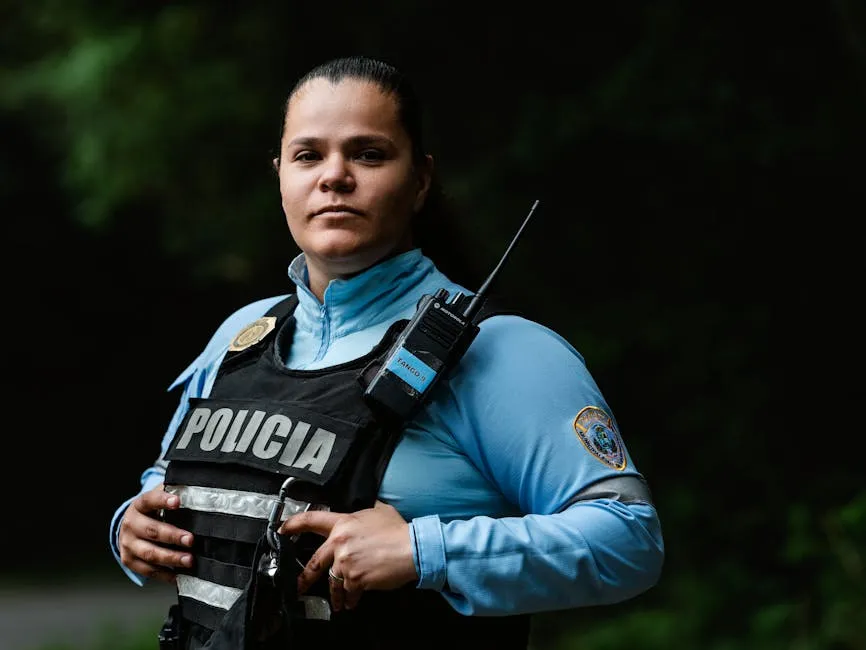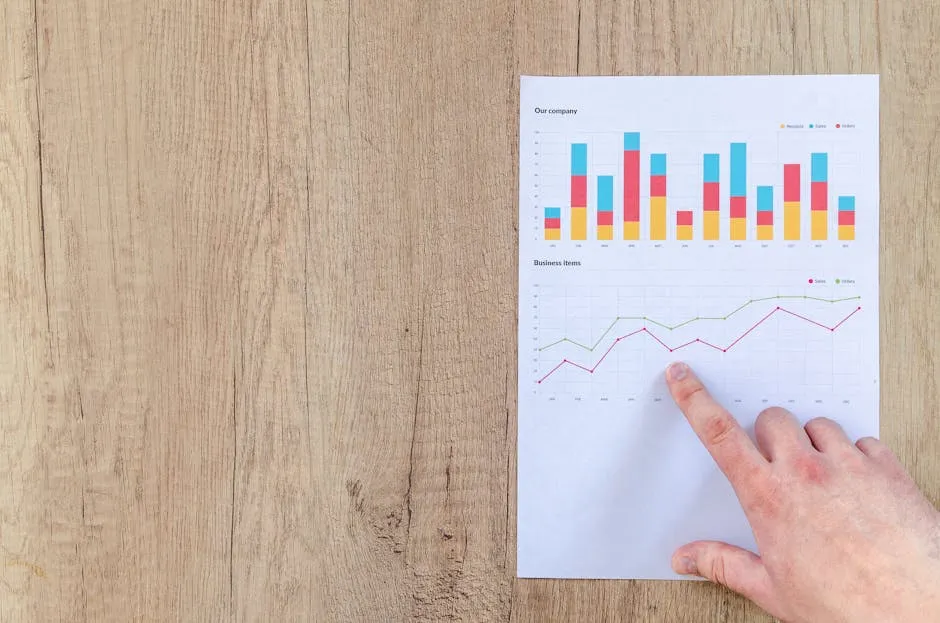Introduction
Charleston, South Carolina, is a city rich in history and culture. Founded in 1670, it boasts a unique blend of Southern charm and coastal beauty. From its cobblestone streets to its historic plantations, Charleston attracts visitors with its stunning architecture and vibrant arts scene. However, like any urban area, it faces its share of challenges, including crime.
Understanding crime statistics is crucial for both residents and visitors. It helps individuals make informed decisions about safety and security. Whether you’re a local deciding on a neighborhood or a tourist wondering where to explore, crime data is a valuable resource.
This article aims to provide a comprehensive analysis of crime statistics in Charleston. We’ll examine current trends, compare data with state and national averages, and explore the implications for safety in the area. By the end, readers will have a clearer picture of Charleston’s crime landscape and what it means for their daily lives.

For a deeper understanding of how statistical learning can aid in analyzing crime data, check out an introduction to statistical learning with python book length.
Understanding Crime Statistics
Crime statistics are numerical representations of crime rates within a specific area. They provide insights into the prevalence and types of crimes occurring over a given period. These statistics are compiled from reports submitted by law enforcement agencies across the country, ensuring a standardized approach to data collection.
Reliable crime data is essential for effective law enforcement and community safety planning. Local police departments, the FBI, and other agencies work diligently to gather accurate information. This data often includes details on various crime types, such as violent crimes and property crimes.
Violent crimes generally include offenses like murder, assault, and robbery. Property crimes encompass burglary, theft, and vandalism. Each of these categories is crucial for understanding the safety of a community. By analyzing these statistics, residents can gauge their personal risk and law enforcement agencies can allocate resources effectively.
In Charleston, as in many cities, crime statistics serve as a foundation for understanding local safety dynamics. From trends in violent crime to shifts in property offenses, these numbers tell a story about the community’s overall well-being. As we dive deeper into Charleston’s crime statistics, the importance of this data will become even clearer.

If you’re looking to enhance your personal safety, consider investing in a Home Security System. These systems provide peace of mind by monitoring your home around the clock, ensuring that your castle is well-guarded against unwanted visitors.
Crime Rate Overview in Charleston
Current Crime Statistics
Charleston, South Carolina, has its fair share of crime, like any bustling city. The overall crime rate stands at a notable 23 crimes per 1,000 residents. This isn’t a number to brush off lightly. In fact, it means residents have a 1 in 43 chance of becoming a victim of either violent or property crime.
When we break it down, the violent crime rate is about 4 incidents per 1,000 residents. This includes serious offenses like murder, assault, and robbery. Comparatively, the national average for violent crimes is around 4 per 1,000 residents. So, Charleston is pretty much on par with the rest of the country in this regard.
Now, let’s talk property crimes. Charleston’s property crime rate is 19 per 1,000 residents. This includes theft, burglary, and motor vehicle theft. Nationally, the average property crime rate is about 20 per 1,000. So, Charleston is slightly below the national average, which is a bit of good news amidst the numbers.
However, don’t let those statistics lull you into a false sense of security. Motor vehicle theft is particularly concerning, with Charleston having one of the highest rates in the nation. Residents face a 1 in 302 chance of their vehicle being stolen. So, if you own a car, consider investing in a good Vehicle Security System to protect your investment.

Historical Trends
Looking back over the last decade, we see some interesting trends in Charleston’s crime rates. For starters, the violent crime rate has decreased by 5.8% from 2022 to 2023. This downward trend is encouraging and indicates that law enforcement efforts may be paying off.
However, it’s not all rainbows and sunshine. While violent crime has seen a drop, certain types of crime, like weapons violations, have been on the rise for ten consecutive years. In fact, there was a staggering 106.2% increase in weapon violations from 2014 to 2023. This suggests that while fewer people may be getting hurt, there’s still a worrying proliferation of weapons in the community.
Property crime trends tell a similar story. The overall property crime rate has also seen fluctuations. Although it is lower than the national average, there have been spikes in specific areas, particularly in theft and burglary incidents.
In summary, while Charleston has made strides in reducing its violent crime rate, the persistent issue of weapon violations and the complexities of property crime necessitate continued vigilance. Residents should remain aware of their surroundings and consider community safety initiatives to help address these challenges. Understanding these trends can empower the community to work together for a safer Charleston, making it not just a beautiful place to visit, but a safe one to call home.

Breakdown of Violent Crime in Charleston
Types of Violent Crimes
Violent crime is a serious concern in Charleston, encompassing various categories such as murder, rape, robbery, and assault. Each type of offense paints a different picture of public safety and community health.
Murder is the most severe form of violent crime. In Charleston, the murder rate is approximately 0.05 per 1,000 residents. While this number may seem low, it represents a significant loss for families and the community.
Rape is another disturbing category. The rate stands at about 0.35 incidents per 1,000 residents. This statistic highlights the ongoing struggle against sexual violence and the need for community support systems to assist victims.
Robbery, often involving force or threat, has a rate of roughly 0.49 per 1,000 residents. This crime can leave victims feeling vulnerable and unsafe, emphasizing the need for effective law enforcement and community initiatives.
Assault is the most common violent crime in Charleston, with a rate of about 2.88 per 1,000 residents. Assaults can vary in severity, from minor altercations to serious injuries, affecting individuals and their families profoundly.
In summary, while Charleston’s violent crime statistics may not seem alarming at first glance, they reflect real incidents that impact lives daily. Understanding these figures can help residents advocate for safer communities.

Comparison with State and National Averages
| Crime Type | Charleston (per 1,000 residents) | South Carolina (per 1,000 residents) | National Median |
|---|---|---|---|
| Murder | 0.05 | 6.3 | 6 |
| Rape | 0.35 | 40.0 | 38.2 |
| Robbery | 0.49 | 66.1 | 40.6 |
| Assault | 2.88 | 268.2 | 401.3 |
From this table, we see that Charleston’s statistics are significantly lower than both the state and national averages for violent crime. For murder, Charleston’s rate is notably low compared to the state’s average. However, for assaults, Charleston reflects a concerning trend as it approaches state averages.
These comparisons highlight the dual nature of crime statistics: while Charleston may appear safer than many areas, there are still challenges that need addressing. Community engagement, effective policing, and preventive measures can help maintain and improve these numbers, ensuring a safer environment for all.

Breakdown of Property Crime in Charleston
Types of Property Crimes
Property crimes pose a different set of challenges for Charleston residents. These offenses include burglary, theft, and motor vehicle theft, each with unique implications for community safety.
Burglary is a significant concern, with a rate of approximately 1.51 incidents per 1,000 residents. This crime can invade personal space, leaving victims feeling violated and insecure in their homes.
Theft is the most prevalent property crime in Charleston, standing at 14.48 per 1,000 residents. Theft can range from shoplifting to more organized forms of stealing, impacting local businesses and residents alike.
Motor vehicle theft is particularly troubling, with a rate of about 3.31 incidents per 1,000 residents. This statistic reflects broader national trends, with Charleston facing one of the highest rates of vehicle theft in the country. Residents are encouraged to take preventative measures to protect their vehicles, such as investing in security systems and parking in well-lit areas. A reliable Heavy-Duty Lock for Doors can enhance your home security and deter burglars.
These property crime statistics reveal a need for community vigilance. Understanding the trends can help residents develop strategies to safeguard their belongings and foster a sense of security.

Comparison with State and National Averages
| Crime Type | Charleston (per 1,000 residents) | South Carolina (per 1,000 residents) | National Median |
|---|---|---|---|
| Burglary | 1.51 | 269.8 | 352.7 |
| Theft | 14.48 | 1,401.9 | 1,706.3 |
| Motor Vehicle Theft | 3.31 | 282.7 | 249.2 |
Charleston’s property crime rates are relatively lower than the state averages, reflecting positively on community safety. However, theft remains a pressing issue that needs attention, particularly in densely populated or high-traffic areas where tourists frequent.
The implications of these comparisons underscore the importance of community engagement and proactive crime prevention strategies. By addressing property crime effectively, Charleston can enhance its charm and security, making it a safer place for locals and visitors alike.

Neighborhood-Specific Crime Trends
Popular Neighborhoods Analysis
Charleston is a city with diverse neighborhoods, each with its own flavor and crime trends. To help you navigate this charming city, let’s break down crime rates in some popular areas.
Daniel Island is often lauded as one of the safest neighborhoods. With a low crime rate, it’s a haven for families and professionals seeking tranquility. The community is known for its beautiful parks and tight-knit atmosphere. Residents can breathe easy knowing they’re living in a relatively secure environment.
North Charleston, on the other hand, presents a different picture. This area has a higher crime rate, especially concerning violent crimes. With statistics showing nearly 1 in 17 residents facing the risk of becoming a victim, it’s important for anyone considering moving there to remain vigilant. Factors contributing to these numbers include socioeconomic challenges and a lack of community resources.
West Ashley strikes a balance. It offers a mix of suburban comfort with access to city amenities. Crime rates here are moderate. Residents enjoy a sense of safety, but caution is still advised, particularly in certain pockets of the neighborhood. Increased community engagement and neighborhood watch initiatives are vital in maintaining and improving safety.
Downtown Charleston is a hotspot for tourists and locals alike. While it boasts vibrant nightlife and fantastic dining options, it also experiences higher crime rates, particularly in property crimes. The influx of visitors can sometimes lead to increased petty thefts and vehicle break-ins. Locals often recommend being mindful of belongings, especially in crowded areas. Consider using a RFID Blocking Wallet to keep your cards protected from electronic pickpockets.
Overall, crime rates fluctuate across Charleston’s neighborhoods. Understanding these trends helps residents and visitors make informed decisions about where to live, work, and play.

Community Resources and Safety Initiatives
Charleston residents benefit from a range of community resources aimed at improving safety. Local law enforcement actively engages with the community through various initiatives. One prominent program is the neighborhood watch, where residents team up to keep an eye on their surroundings. This initiative fosters a sense of camaraderie and alertness, allowing neighborhoods to work together against crime.
Community policing is another effective strategy. Officers build relationships with residents, encouraging open communication. This approach not only addresses immediate safety concerns but also strengthens community bonds. Residents are more likely to report suspicious activities when they trust their local police.
Additionally, Charleston offers resources like self-defense classes and safety workshops. These programs empower residents with tools to protect themselves and their property. Local schools often participate in safety drills to educate students about emergency procedures, ensuring that even the youngest citizens understand the importance of vigilance.
For those seeking real-time updates, several online platforms provide crime maps and alerts. These resources keep residents informed about local incidents, aiding in community awareness. You might also consider carrying a Personal Safety Alarm for an added layer of protection.
In summary, Charleston’s commitment to safety through community initiatives and resources fosters a proactive environment. By working together and staying informed, residents can enjoy the city’s charm while keeping crime at bay.

Economic and Social Factors Influencing Crime
Economic Conditions
Economic factors play a significant role in shaping crime rates in Charleston. For starters, the unemployment rate directly impacts the likelihood of criminal activity. When people struggle to find jobs, some may resort to crime as a means of survival. The current unemployment rate in Charleston is remarkably low at 2.3%, which is below the national average. However, this doesn’t eliminate the economic pressures residents face.
Housing costs in Charleston are substantially higher than the national median. The median home price sits around $349,000, significantly impacting residents’ financial stability. High housing costs can lead to economic insecurity, pushing some individuals toward crime. When people can’t afford basic necessities, desperation may drive them to commit theft or other property crimes.
Additionally, the rising cost of living, coupled with stagnant wages in certain sectors, creates a breeding ground for crime. With increased financial strain, residents may feel compelled to engage in unlawful activities to make ends meet. Indeed, studies show that economic insecurity correlates with higher crime rates, indicating a complex relationship between financial stability and criminal behavior.
In summary, while Charleston enjoys low unemployment rates, the high cost of living and housing can create economic pressure that contributes to crime. Understanding these dynamics is crucial for addressing the root causes of crime in the community.

Social Dynamics
Social factors also significantly influence crime rates in Charleston. Education plays a vital role in shaping community safety. Higher education levels tend to correlate with lower crime rates. When individuals pursue education, they often gain better job opportunities, reducing the likelihood of resorting to crime. Unfortunately, educational disparities exist in Charleston, leading to a cycle of poverty and crime in certain neighborhoods.
Community engagement is another critical element. Areas with strong community ties and active resident participation often experience lower crime rates. When neighbors know each other and look out for one another, there’s a natural deterrent to criminal behavior. Conversely, communities lacking engagement may experience higher crime rates due to anonymity and disconnection.
Juvenile offenders present a particular challenge for crime statistics in Charleston. The number of juvenile offenders rose dramatically from 1,008 in 2022 to 1,964 in 2023. This alarming trend highlights the necessity for community programs aimed at youth engagement. Initiatives that provide mentorship, extracurricular activities, and job training can help steer young people away from crime. You might also consider a Emergency Survival Kit to prepare for unexpected situations.
Additionally, law enforcement can play a pivotal role in addressing juvenile crime by fostering relationships with schools and community organizations. Programs that focus on prevention rather than punishment can make a real difference in the lives of young offenders.
In conclusion, the interplay of economic conditions and social dynamics significantly influences crime rates in Charleston. By addressing educational disparities, fostering community engagement, and providing opportunities for youth, Charleston can work toward reducing crime and creating a safer environment for all its residents.

Conclusion
Charleston’s crime statistics reveal a complex landscape. Economic and social factors intertwine to shape crime trends, emphasizing the need for a multifaceted approach to safety. Although the city has made strides in reducing violent crime, challenges remain. The rising number of juvenile offenders and persistent economic pressures highlight areas requiring attention.
Awareness is paramount for both residents and visitors. Understanding crime statistics allows individuals to make informed decisions about safety. Simple measures, such as being vigilant and participating in community initiatives, can enhance security for everyone. Don’t forget about personal safety tools like a Self-Defense Keychain to keep yourself protected.
Looking ahead, it’s essential to consider potential future trends. Community efforts aimed at addressing the root causes of crime, such as economic disparities and lack of youth engagement, can foster a safer Charleston. As residents and local authorities work together, the city can build a more secure environment, ensuring that its historical charm and vibrant culture shine brightly without the overshadowing presence of crime.

FAQs
What is the overall crime rate in Charleston?
Charleston’s overall crime rate stands at 23 crimes per 1,000 residents. This statistic signifies that residents have a 1 in 43 chance of becoming a victim of either violent or property crime.
How does Charleston’s crime rate compare to other cities in South Carolina?
Charleston’s crime rate is lower than many similar-sized cities in South Carolina. For instance, cities like North Charleston have higher crime rates, making Charleston relatively safer. However, it is still important to remain vigilant, especially in areas with higher property crime rates.
What safety measures can residents take?
Residents can implement several personal safety measures. Always be aware of your surroundings, lock doors and windows, and avoid leaving valuables in plain sight. Joining or forming neighborhood watch programs can also foster a sense of community vigilance.
Where can I find more detailed crime statistics?
Residents interested in detailed crime statistics can access local law enforcement reports or websites like NeighborhoodScout. These resources provide comprehensive crime data and can help individuals stay informed about safety in their neighborhoods.
Please let us know what you think about our content by leaving a comment down below!
Thank you for reading till here 🙂
All images from Pexels




